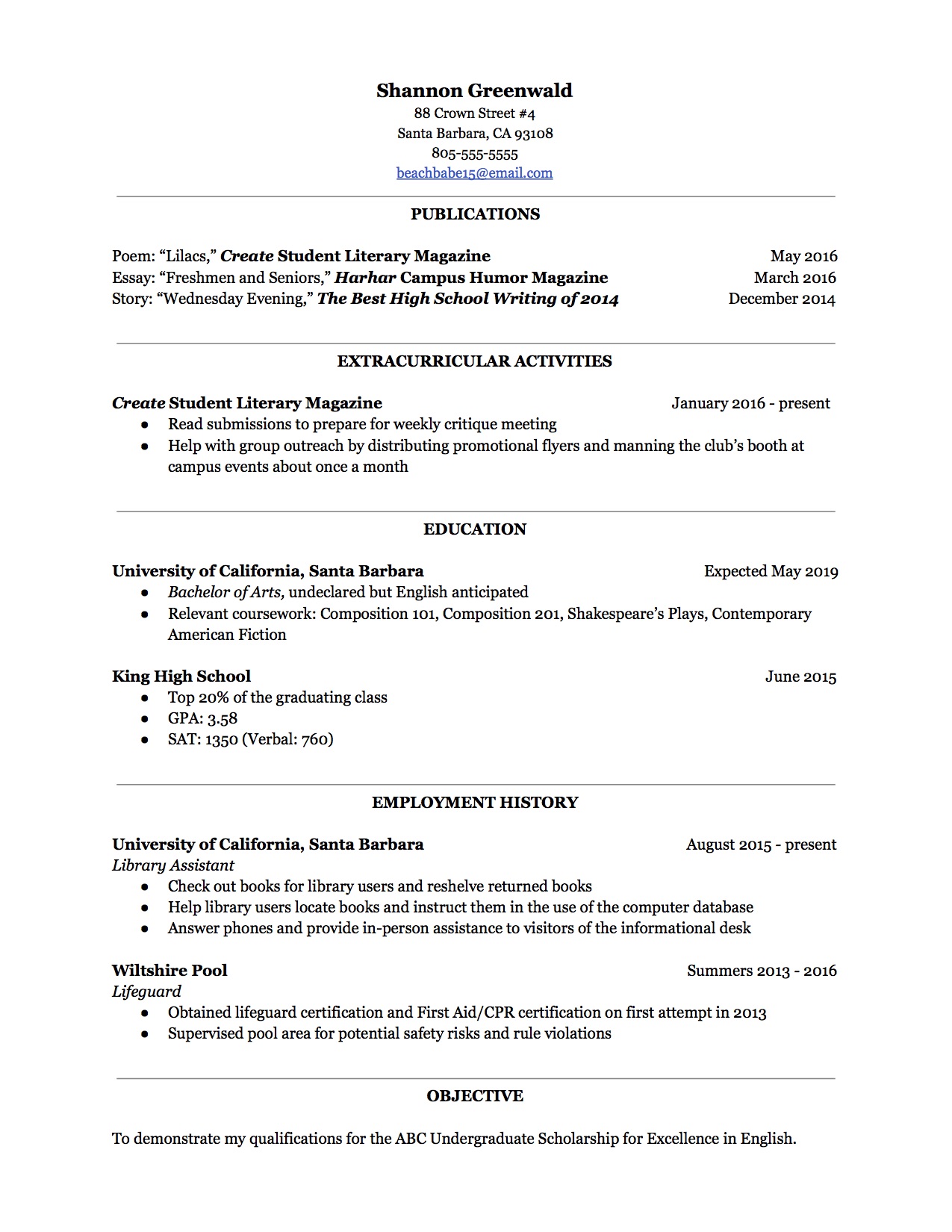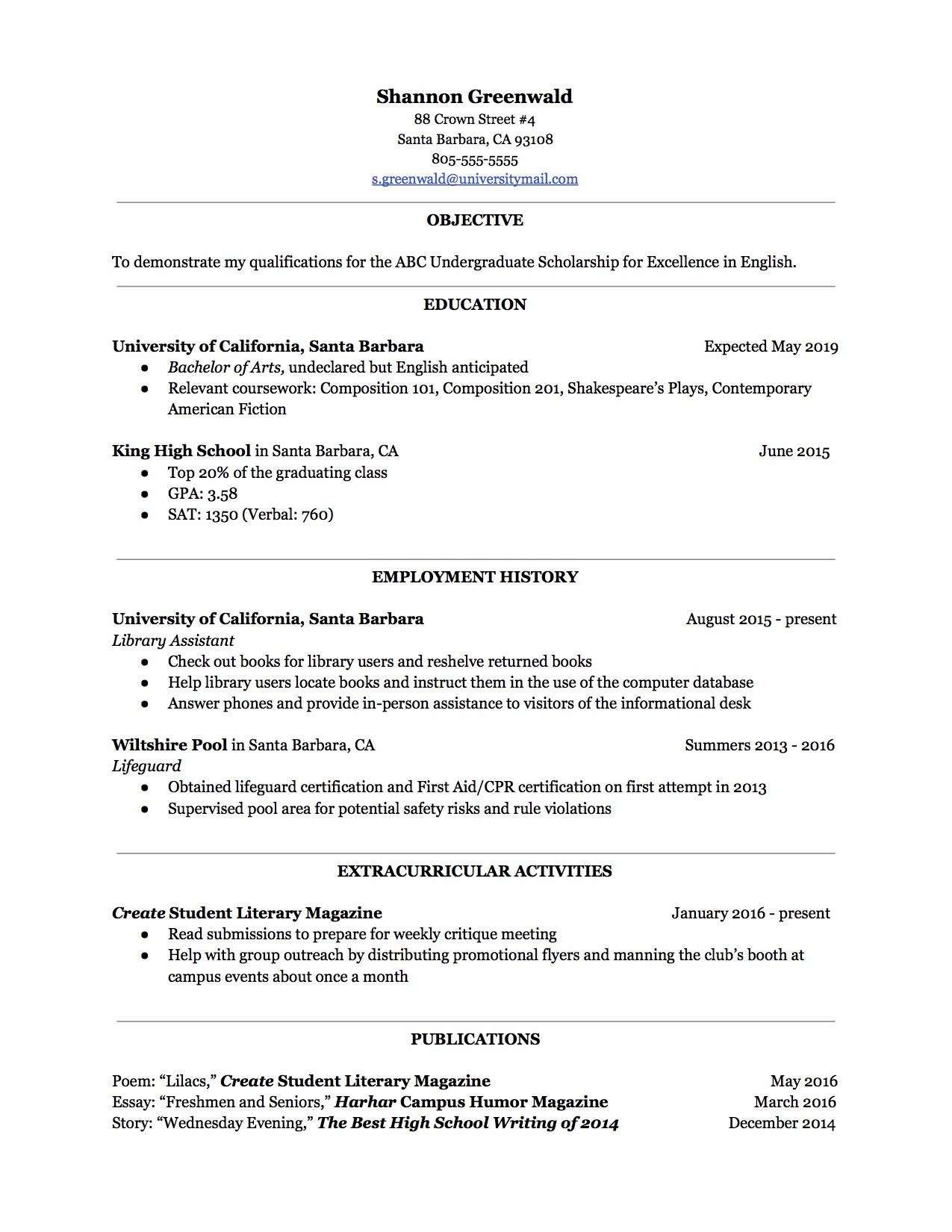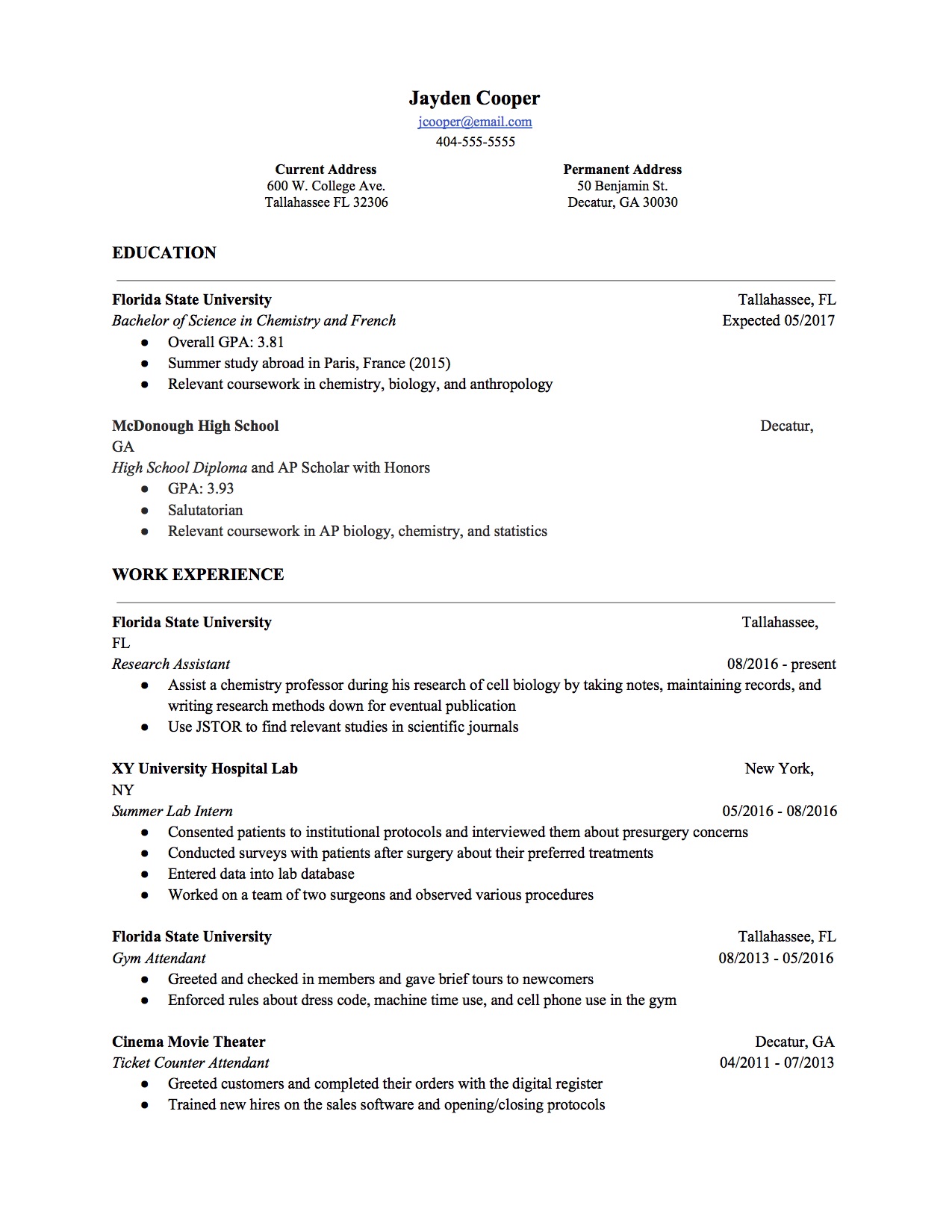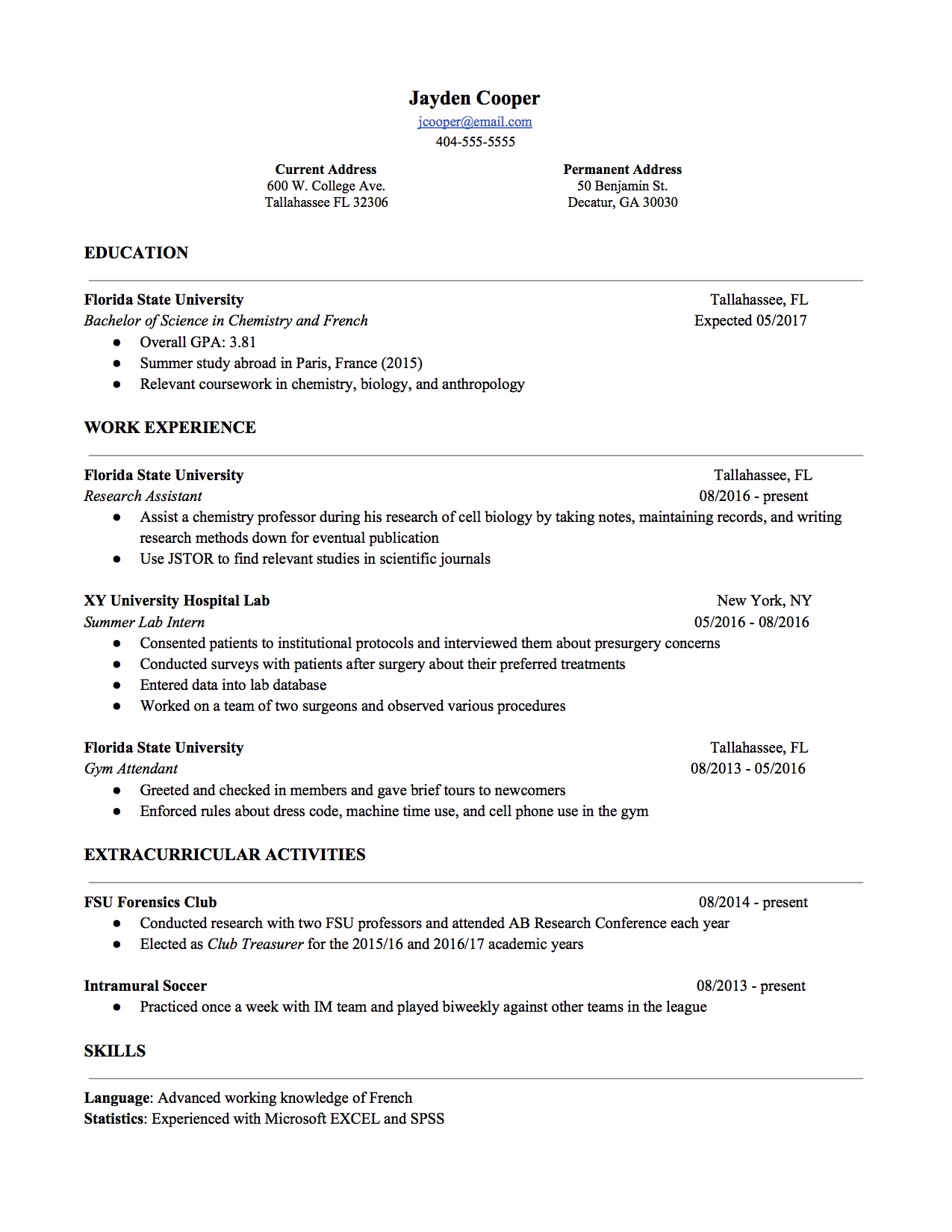Some students write their first résumés in high school to get after-school jobs or to apply to certain colleges. But the stakes are higher once you have that high school diploma. You’re an adult now, and your résumé needs to look like an adult’s if you want jobs, scholarships, and internships to take you seriously.
Not many college résumés get the attention they deserve (i.e. full-blown makeovers). That’s why we’re here to help a couple of undergrads change their résumés from drab to fab.
Here are our contestants:
Shannon
Shannon is a sophomore who needs to submit a résumé in order to be considered for a certain scholarship. Let’s take a look at what she has so far.

What is Shannon doing right?
- Her résumé has clearly defined categories that are easy to read.
- She expands on her experiences. Her résumé doesn’t look like a laundry list because she elaborates on her responsibilities. We have a clear idea of what her participation looked like in each activity.
- She focuses her résumé on her preparation in English and writing, which is great since she is applying for a specific scholarship, but she does provide additional experiences (like her summer job as a lifeguard) to make herself seem more human.
What’s not working?
- Her email address seems juvenile. Beachbabe15 sounds like a Twitter handle, not a professional email address.
- The categories on her résumé are organized in a strange order. The objective of the résumé is lost at the bottom. Plus, the education section, which is hidden in the middle of the résumé, should give context to the extracurricular activities. Right now, they come first, so it isn’t clear where Shannon is participating in these activities.
- Not every listed activity indicates which city she completed it in. While her college’s name clearly tells us that she studies in Santa Barbara (and we can assume her extracurricular activities take place there as well), it is unclear in which city she went to high school and where she worked as a lifeguard.
How can she fix those things?
- Use a professional email address. If she has a university email account, she should use it. Otherwise, she should list an email address that contains her name, rather than a username.
- List the objective first so that it doesn’t get lost, then education. Everything else follows in order of importance.
- Tell us where everything was completed. The name of the organization isn’t enough. Make sure each activity is accompanied by a city and state if it isn’t already implied.
Drumroll for the results…

Wow, Shannon. Work it! Your résumé is lookin’ good, girl!
Jayden
Jayden is a college senior, who is working on his résumé so that he can send it out to apply for entry-level positions once he graduates.

What are the strengths of Jayden’s résumé?
- His contact information is clear. Because senior year of college is a time of uncertainty, he has provided both his college address and his family’s address.
- His information is complete. He has fully described his activities and his responsibilities. We have a clear picture of what he did, when he did it, and where.
- Each category on his résumé is clearly defined and arranged in an order that makes sense.
How about the weaknesses?
- The résumé is over a page. It’s simply too long. While sometimes it’s easy enough to adjust the margins and play with the font size, Jayden’s résumé is already in 10-point font, and he shouldn’t go any smaller.
- It features outdated information. Because he had such a fulfilling college career, he doesn’t need to include his activities from high school to take up space.
- The interest section isn’t saying anything new. At this point, it’s just taking up valuable space.
How can Jayden improve?
- Shorten his résumé until it fits on one page. This means removing anything that’s no longer relevant:
- The interest section
- Anything from his high school career

Ta–da! All better. Nice job, J!
These undergrads are sure to impress scholarship foundations and employers. Now it’s your turn. If you haven’t started your résumé yet, now’s a great time. If you’re still in high school, you might check here. Otherwise, review and edit what you have. Get friends or parents to take a look for you. Maybe they have a résumé-makeover idea worth trying.
-
Tips for Acing Your Skype Interview
-
Five Reasons Why You Should Consider Trade School
-
Why (and How) to Start Networking in College
-
Six Inspiring Reasons You Should Pursue a STEM Major
-
A Survival Guide for Students Who Have to Work on Black Friday
-
Claves para una entrevista laboral
-
What Happens after You Receive Your Bachelor’s Degree
-
Why Résumé Padding Doesn’t Always Work
-
The Five Most Versatile Majors (and Why It’s Okay if Your Career Isn’t Related to Your Degree)
-
Fresh Grads: Tips to Jump-Start Your Job Search
-
How to Prepare for and Succeed at Your Next Interview
-
How to Turn Your Internship into A Job Offer

